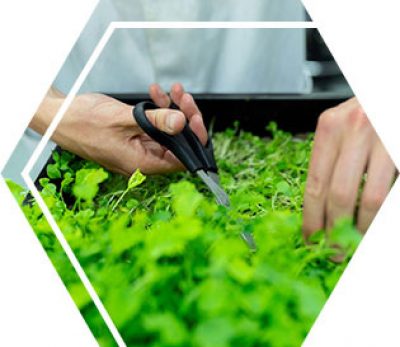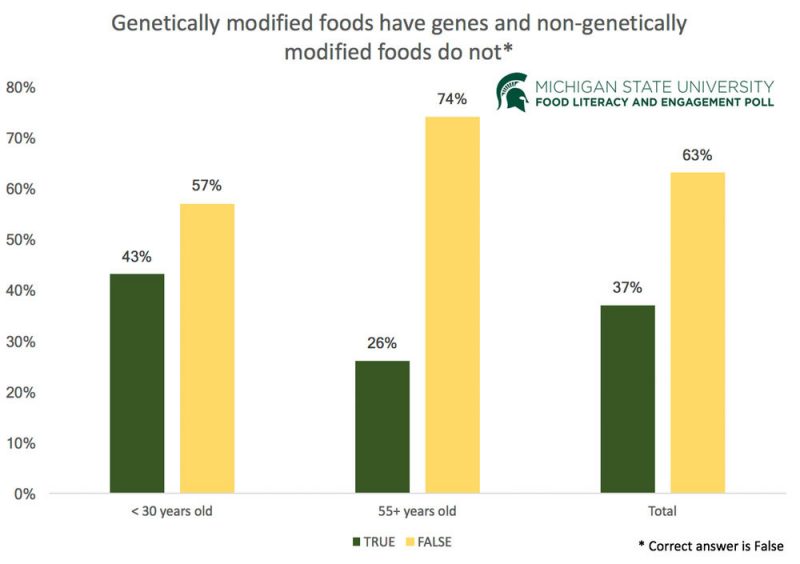


Apr 08, 2024
(Part 2 of 5)
In today's modern society, where food is readily available on supermarket shelves, many people have become detached from the source of their sustenance. Agricultural literacy, or the understanding of food, fiber, and fuel production, is dwindling at an alarming rate. This lack of agricultural knowledge has far-reaching consequences for our health, environment, and food security. Moreover, even though the United States has one of the world's safest food supplies, with stringent regulations and monitoring systems in place, this detachment from the origins of our food can lead to complacency in appreciating and safeguarding this vital aspect of our daily lives. Addressing this issue and bridging the knowledge gap for a more informed and sustainable future is imperative by incorporating agricultural contexts and scenarios into the science curriculum. Understanding both the safety and production aspects of our food supply can help individuals make more informed choices and contribute to the overall resilience of our food system. (Glaub Farm Management, US ranks 3rd on Global Food Security index)
Bringing agriculture into the classroom is not a new idea. A Penn State study from 1987 states:
“While the role of science in agricultural education is fairly well understood, the potential role of agriculture science teaching seems to have been, so far, a neglected issue. The educational potential of agriculture stems from the diversity of its components and the tangibility of some of these components. The web of intellectual and practical activities which is called agriculture embraces most of the elements of modern science teaching; whichever orientation this teaching may wish to adopt: enquiry-experimental or socio-technological. As a science-based human activity, it may provide the educator with a unique combination of educational opportunities, in a context which is authentic and accessible to the pupil and the teacher.” (Dreyfus, The Potential Role of Agriculture in Science Teaching 1987)
The perception of agriculture as a vocational field continues to persist. Agriculture is sometimes viewed as a vocational or technical field rather than a traditional academic discipline. It may be associated with farming, crop production, or livestock management, which are often seen as separate from the broader scientific concepts taught in schools. Consequently, agricultural topics may be addressed in vocational or specialized agricultural programs rather than in the general science curriculum. Siloing agriculture, no pun intended, hinders participation for many individuals. Research demonstrates that inequalities and exclusions have cost us millions of inventions and innovations. Integrating agricultural concepts into the general science curriculum could open the door for many more students to gain an understanding of a field they may not have otherwise been exposed to.
The role of sciences, especially biology, as part of an agricultural education program seems to have been universally recognized for at least a few decades. However, agricultural contexts are not as often integrated into science education programs as other contexts such as healthcare or conservation. Agricultural examples of chemistry, physics, and environmental sciences could be effective means for introducing important scientific concepts, but the integration of these principles is dependent upon the ability of the educator to recognize their applicability and then integrate them into the scope and sequence of their district’s curriculum.
Our current educational landscape presents a stark contradiction, as a recent survey from the National 4-H Council reveals a glaring gap between the perceived importance of agricultural science and its integration into high school science curricula. Astonishingly, over 80 percent of surveyed high school science teachers acknowledge the significance of agricultural science, yet just 22 percent incorporate it into their lesson plans. The survey further sheds light on the disconcerting reality that fewer than half of the teachers feel adequately qualified or supported to teach agri-science.
Digging deeper, the survey highlights a troubling disconnect between the perceived importance of agricultural careers and the actual pursuit of such careers by high school students. While 86 percent of parents agree on the importance of encouraging careers in the agricultural industries for the country's future success, nearly 70 percent do not believe their children will pursue a career in agri-science. This contradiction is further underscored by data from the United States Department of Agriculture, revealing thousands of unfilled jobs in agriculture annually (Science and Engineering, 2020-2025), a topic we will explore a bit more thoroughly in later posts. Dr. Mae Jemison, Chief Ambassador for Bayer’s Making Science Make Sense initiative, emphasizes that this data mirrors a broader challenge in STEM education and careers, urging the need for new generations of STEM-literate leaders equipped to address the pressing challenges facing humanity such as food security (Are we preparing the next generation for tomorrow's global challenges? new study suggests we have work to do. 2018). If we are to cultivate innovative solutions for issues like nutrition and health needs amid a growing population, a paradigm shift in STEM education is imperative.
The implications of this educational oversight are profound, especially considering the critical role of agriculture in addressing global, national, and local challenges such as food security. The United Nations paints a picture of the challenge in defining their Sustainable Development Goal #2: Zero Hunger.
“It is projected that more than 600 million people worldwide will be facing hunger in 2030, highlighting the immense challenge of achieving the zero hunger target.
Shockingly, the world is back at hunger levels not seen since 2005, and food prices remain higher in more countries than in the period 2015–2019. Along with conflict, climate shocks, and rising cost of living, civil insecurity and declining food production have all contributed to food scarcity and high food prices.
Investment in the agriculture sector is critical for reducing hunger and poverty, improving food security, creating employment and building resilience to disasters and shocks.” (Goal 2: Zero Hunger - United Nations Sustainable Development 2023)
To examine one consequence of how this impacts society, let’s take the genetic modification of crops as an example. The vast majority of scientists agree that genetically modified organisms (GMOs) are an important tool to meet growing global food demands. Developing GMOs that can survive with less water or fertilizer, promote disease resistance, improve crop yield, or add nutrients for malnourished communities in developing countries could drastically improve our chances of sustainably feeding 10 billion people by 2050.

Unfortunately, a Michigan State University (MSU) poll found that much of the public does not embrace the promise of genetic modification in agriculture. Even though the United States Food and Drug Administration has deemed GMOs safe for consumption, non-scientific arguments continue to influence consumer choices away from these products. The result is widespread information that circumvents progress toward allowing these technologies to make an impact.
In cultivating a scientifically literate society, we underscore the vital role of comprehensive science education, which aligns with the objectives outlined in A Framework for K-12 Science Education. Profound impacts on progress can occur when the intricate science underpinning various technologies remains elusive to the general populace, primarily due to limited opportunities for students to engage deeply in sensemaking and knowledge transfer across diverse contexts, including agriculture. As an illustration, findings from an MSU food literacy poll reveal that a significant portion of Americans, approximately one-third, harbor the misconception that only genetically modified foods possess genes (Kirshenbaum & Buhler, 2020). It is crucial to clarify that, in reality, genes are present in all foods, just as they are in all living organisms, including humans. This underscores the pressing need for robust science education that empowers individuals to comprehend and critically evaluate scientific information in an increasingly complex world.

A Framework for K-12 Science Education states the following,
“The overarching goal of our framework for K-12 science education is to ensure that by the end of 12th grade, all students have some appreciation of the beauty and wonder of science; possess sufficient knowledge of science and engineering to engage in public discussions on related issues; are careful consumers of scientific and technological information related to their everyday lives; are able to continue to learn about science outside school; and have the skills to enter careers of their choice, including (but not limited to) careers in science, engineering, and technology.”
(A framework for K-12 science education practices, crosscutting concepts, and core ideas 2012)
To fulfill the framework's vision and counter binary thinking that hinders sustainability and resilience goals, we should integrate food and agriculture contexts into science education more routinely. In so doing, we would also provide students with the tools and skills necessary to make sense of the tradeoffs within our food systems and pursue college and career choices that contribute solutions to pressing sustainability and resilience challenges. Additionally, since we all have an agricultural identity and depend upon it daily, it provides a localized context ripe for empowered learning.
Agriculture is the application of biology, chemistry, and physics. In other words, agriculture is an applied science, much like engineering. However, the inclusion or exclusion of agriculture in the traditional science curriculum can vary depending on the educational system, cultural factors, and other priorities. There are several reasons why agriculture may not receive prominent emphasis in general science education, here are a few:
It's worth noting that the exclusion of agriculture from the traditional science curriculum is not universal. In some regions, there is a recognition of the importance of agriculture in sustainable and resilient food production, environmental stewardship and justice, and the overall well-being of communities. As a result, there are efforts to integrate agricultural concepts and practices into the science curriculum to provide students with a more holistic understanding of science and its practical applications.
Recalling our earlier discussion, it becomes evident that the prevailing absence of exposure to the scientific aspects of agriculture and food systems presents substantial hurdles to our well-being, environmental sustainability, and food security. To address these challenges effectively, we must prioritize the integration of agricultural contexts into the science curriculum. This integration will foster a deeper understanding and heightened awareness of agricultural practices, their environmental implications, and the crucial significance of sustainable food systems.
We hope this brings about important discussions between you and your colleagues. Do you integrate agricultural storylines into your science teaching? Where might you start in building a vision for such integrations? How can science learning allow students to use science and engineering knowledge and practices to make sense of agricultural phenomena and solve related problems? How can we inspire the next generation of scientists and citizens to take action and feel empowered to use agriculture to improve society?
Want to learn more? Watch a recorded webinar that explores how real-world food and agriculture phenomena related to sustainability, resilience, and food security spark curiosity and engage all students in NGSS science.
Sources:
Bayer Crop Science and the National 4-H Council. (2018, March 19). Are we preparing the next generation for Tomorrow’s global challenges? new study suggests we have work to do. CropScience. https://www.cropscience.bayer.us/news-press/crop-protection/are-we-preparing-the-next-generation-for-tomorrows-global-challenges-new-study-suggests-we-have-work-to-do
Blancke, S. (2015, August 18). Why people oppose GMOs even though science says they are safe. Scientific American. https://www.scientificamerican.com/article/why-people-oppose-gmos-even-though-science-says-they-are-safe/
Centers for Disease Control and Prevention. https://www.cdc.gov/healthyschools/nutrition/school_nutrition_education.html
Coleman, S., Chinn, P., Morrison, D., & Kaupp, L. (2019, March). How place-based science education strategies can support equity for students, teachers, and communities. STEM Teaching Tools. https://stemteachingtools.org/brief/57
Division of Population Health, National Center for Chronic Disease Prevention and Health Promotion. (2023, January 10). Healthy Eating Learning Opportunities and nutrition education.
Dreyfus, A. (1987a). The potential role of Agriculture in Science Teaching. Research in Rural Education, Volume 4, Number 1. https://jrre.psu.edu/sites/default/files/2019-07/4-1_3.pdf
A framework for K-12 science education practices, crosscutting concepts, and core ideas. (2012). . National Academies Press.
Glaub Farm Management. (n.d.). US ranks 3rd on Global Food Security index. US Ranks 3rd on Global Food Security Index | Glaub Farm Management. https://www.glaubfm.com/blog/us-ranks-3rd-global-food-security-index#:~:text=The%20Economist%20Group%2C%20supported%20by,list%2C%20following%20Singapore%20and%20Ireland
Kirshenbaum, S., & Buhler, D. (2020, September 15). Americans are confused about food and unsure where to turn for answers, study shows. Alliance for Science. https://allianceforscience.org/blog/2018/03/americans-confused-food-unsure-turn-answers/
McGowan, V. C., & Bell, P. (2022). “I now deeply care about the effects humans are having on the world”: cultivating ecological care and responsibility through complex systems modelling and investigations. Educational and Developmental Psychologist, 39(1), 116–131. https://doi.org/10.1080/20590776.2022.2027212
Purdue University based on work sponsored by the United States Department of Agriculture: National Institute of Food and Agriculture . (n.d.). Science and Engineering, 2020-2025. USDA 2020-2025 Employment Opportunities. https://www.purdue.edu/usda/employment/science-and-engineering/
Rusky, A., Morrison, D., & Bell, P. (n.d.). Keeping Climate Science Learning and Instruction Focused on Creating Solutions and Building Community Resilience. STEM Teaching Tools. https://stemteachingtools.org/brief/68
United Nations. (2023). Goal 2: Zero Hunger - United Nations Sustainable Development. United Nations. https://www.un.org/sustainabledevelopment/hunger/
Any opinions, findings, conclusions, or recommendations expressed in this material are those of the authors and do not necessarily reflect the views of the Food and Agriculture Center for Science Education or the funders.